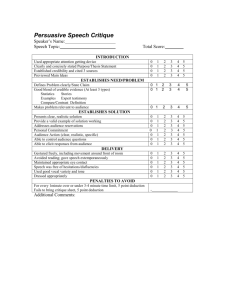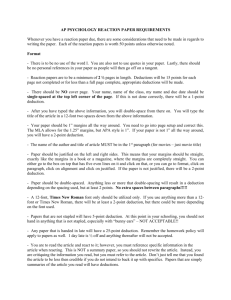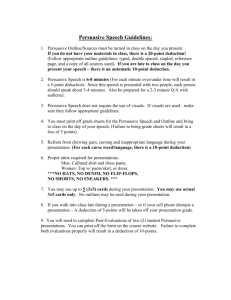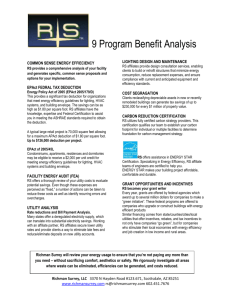Content Standards
advertisement
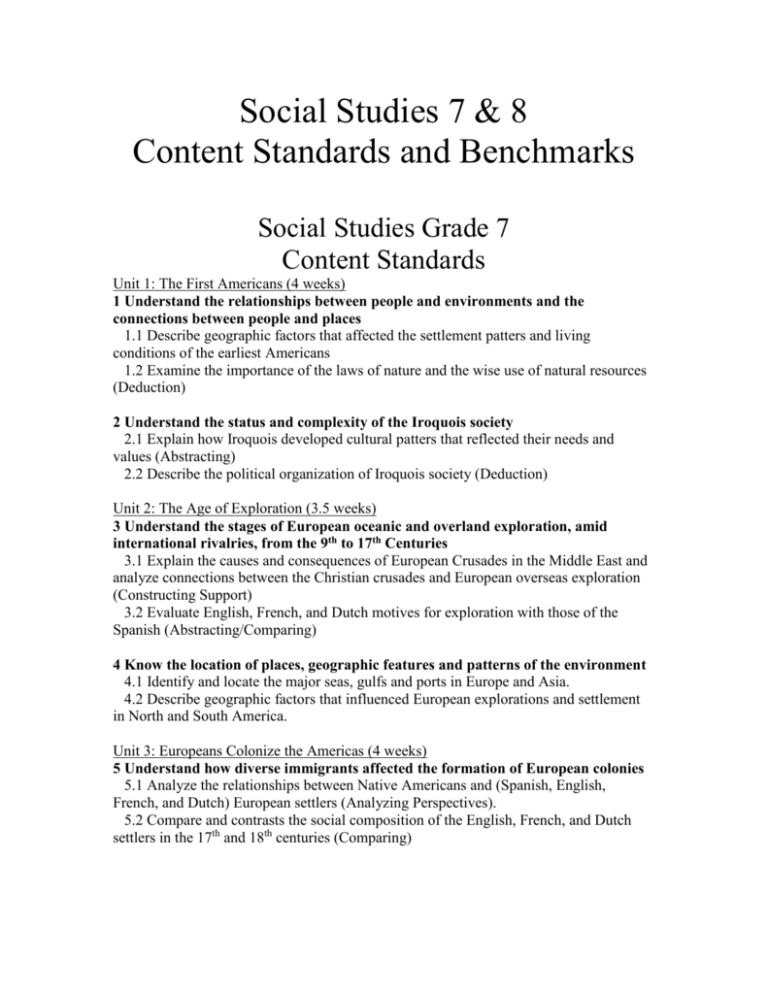
Social Studies 7 & 8 Content Standards and Benchmarks Social Studies Grade 7 Content Standards Unit 1: The First Americans (4 weeks) 1 Understand the relationships between people and environments and the connections between people and places 1.1 Describe geographic factors that affected the settlement patters and living conditions of the earliest Americans 1.2 Examine the importance of the laws of nature and the wise use of natural resources (Deduction) 2 Understand the status and complexity of the Iroquois society 2.1 Explain how Iroquois developed cultural patters that reflected their needs and values (Abstracting) 2.2 Describe the political organization of Iroquois society (Deduction) Unit 2: The Age of Exploration (3.5 weeks) 3 Understand the stages of European oceanic and overland exploration, amid international rivalries, from the 9th to 17th Centuries 3.1 Explain the causes and consequences of European Crusades in the Middle East and analyze connections between the Christian crusades and European overseas exploration (Constructing Support) 3.2 Evaluate English, French, and Dutch motives for exploration with those of the Spanish (Abstracting/Comparing) 4 Know the location of places, geographic features and patterns of the environment 4.1 Identify and locate the major seas, gulfs and ports in Europe and Asia. 4.2 Describe geographic factors that influenced European explorations and settlement in North and South America. Unit 3: Europeans Colonize the Americas (4 weeks) 5 Understand how diverse immigrants affected the formation of European colonies 5.1 Analyze the relationships between Native Americans and (Spanish, English, French, and Dutch) European settlers (Analyzing Perspectives). 5.2 Compare and contrasts the social composition of the English, French, and Dutch settlers in the 17th and 18th centuries (Comparing) 6 Understand how political, religious and social institutions emerged in the American Colonies 6.1 Evaluates the religious, political and economic motives of free immigrants from different parts of Europe who came to North America (Analyzing Perspectives) 6.2 Compare how early colonies were established and governed (Comparing) 6.3 Compare the differing economies of the New England, Middle, and Southern colonies (Comparing) 6.4 Explain the change in the status of Blacks in the English colonies in the 1600s (Deduction) Unit 4: Seeds of Revolution (3 weeks) 7 Understand the causes and character of the American Revolution, the ideas and interests involved in forging the revolutionary movement, and the reasons for the American victory 7.1 Explain the consequences of the French and Indian War and the changing of English Imperial policy following the Treaty of Paris 1763 (Deduction) 7.2 Analyze the perspectives of the various groups (patriots, loyalists, tories and King George) involved in the pre-war struggle (Analyzing Perspectives) 7.3 Examine the new imperial policy on the traditional rights of English people and the legitimacy of asking the colonies to pay a share of the cost of empire from the prospect of England as well as the colonists (Error Analysis) 7.4 Reconstruct the cause and effect of the critical events leading to the outbreak of armed conflict between the American colonies and England (Deduction) 7.5 Analyze the principles articulated in the Declaration of Independence and its arguments for severing colonial ties with England (Deduction) Unit 5: The Revolutionary War (3 weeks) 8 Understand the factors affecting the course of the war and contributing to American victory 8.1 Explain how the Americans won the war against superior British resources (Constructing Support/Deduction) 8.2 Analyze George Washington’s military and political leadership in conducting the Revolutionary War (Analyzing Perspectives) 8.3 Analyze and draw conclusions about the major battles of the Revolutionary War and the reasons for the American victory (induction) Unit 6: Our Nation’s Government (4 weeks) 9 Understand the institutions and practices of government created during the Revolution and how they were revised between 1787 and 1815 to create the foundations of the modern American political system based on the U.S. Constitutions and the Bill of Rights 9.1 Examine the earliest formal structure of the United States government as expressed in the Articles of Confederation (Error Analysis) 9.2 Evaluate the alternative plans considered by the delegates and the major compromises agreed upon to secure approval of the constitution (Classification) 9.3 Infer the features of the Constitution and assess their relevance to current American society (Deduction and Analyzing Perspectives) 9.4 Analyze the opposing points of view of the political parties on the major economic and foreign policy issues of the 1790s (Constructing support) Unit 7: The New Nation in Operation (4 weeks) 10 Understand territorial expansion between 1789 and 1828 and how it effected internal and external affairs 10.1 Describe how the expanding the U.S. borders affected the domestic policies of the first five Presidents (Louisiana Purchase, Florida)(Deduction) 10.2 Identify the role played by the U.S. in international politics as a result of the nation’s expanding boundaries (War of 1812, Monroe Doctrine) (Deduction) 11 Understand how the first American Industrial revolution and the rapid expansion of slavery occurred in the first half of the 19th century, how they changed the lives of Americans and how they led toward regional identities and tensions 11.1 Describe the impact of innovations and technological developments that industrialized the north and led to the rapid spread of slavery throughout the south (Deduction) 11.2 Evaluate the nature and effect of change, including improved methods of transportation and communication, on society and individuals as the United States began to move from an agrarian to an industrial society (Constructing support/Deduction) Unit 8: Age of Jackson (3 weeks) 12 Understand the great Congressional debates of the period, which dealt with the broad issues of regionalism, protectionism, and federal activism in promoting economic development 12.1 Analyze tariff policy, the National Bank, issues of states’ rights, and rights of Native Americans and draw conclusions about their impact on sectional differences (Induction) 12.2 Identify U.S. territorial expansion between 1830 and 1861 and describe how this expansion involved changing relations with foreign countries and Native Americans (Deduction) Unit 9: Division and Reunion (5 weeks) 13 Understand the causes of the Civil War 13.1 Analyze the economic, social, cultural and political differences from the perspectives of the North and South (Analyzing Perspectives/ Deduction) 13.2 Identify actions taken by social reformers to improve conditions for various groups and institutions (slavery, women’s suffrage) (Deduction) 13.3 Analyze the cause and effects of various compromises and why they failed (Deduction) 14 Understand the course and character of the Civil War and its effects on the American people 14.1 Compare the strengths and weaknesses of both the North and South at the beginning of the war (Comparing 14.2 Analyze the wars major stages and campaigns from Fort Sumter to Appomattox from the perspective of the North and South (Analyzing Perspectives/Deduction) 15 Understand how various reconstruction plans succeeded or failed 15.1 Compare and contrast the Reconstruction policies advocated by Lincoln, Andrew Johnson, and the sharply divided Congressional leaders, while assessing these policies as responses to changing events (Comparing) 15.2 Describe how the 13th, 14th, and 15th Amendments contributed to greater democracy and basic human rights for Black Americans (Deduction/Constructing support) Social Studies Grade 8 Content Standards Unit 1: Age of Industry and Big Business (3.5 weeks) 16 Understand the rise of big business, heavy industry and mechanized farming and how the resulting economic transformation affected Americans life between 1870 and 1900 16.1 Analyze how industrialization led to significant changes in the economic patterns for producing, distributing, and consuming goods and services (Deduction) 16.2 Describe how developments in transportation, communication, industry, and agriculture affected American life (Deduction) 17 Understand how the rising American labor movement and the political issues of this era reflected social and economic changes by Industrialization between 1870 and 1900 17.1 Analyze the causes and effects of the organizational and employment changes as a result of large scale industrialization (e.g. gradually shortened work day, new material comforts, low wages in some sectors, high accident rates, unhealthy working conditions) (Deduction) 17.2 Analyze the causes and effects of escalating labor conflicts from late 1870’s through 1890’s including the role of the state and federal government Unit 2: Reform in the United States – 1866-1919 (4 weeks) 18 Understand how the Progressive movement tried to respond to problems arising from rapid industrialization, urbanization, waves of immigration and business and political corruption of the late 19th century 18.1 Evaluate farmers’ attempts to organize in the Populist Movement and the initiation of the federal government’s special protection for farmers (Induction, Deduction) 18.2 Make generalization regarding the politics of the Gilded Age (e.g. corruption, urban bossism, creation of the Civil Service Commission) (Induction) 18.3 Evaluate the major accomplishments and setbacks of the Progressives on the state and national levels, including the roles of Theodore Roosevelt, William Howard Taft and Woodrow Wilson (Analyzing Perspectives Unit 3: Urban Age and Immigration (3.5 weeks) 19 Understand how massive immigration and internal migration after 1870 led to new social patterns, conflicts and ideas of national unity amidst growing cultural diversity between 1870 and 1900 19.1 Compare the motives, expectations and experiences of different immigrant groups including nativist hostility to newcomers (Compare) 19.2 Make generalizations regarding the rise of the American city, including the advent of mechanized mass transportation, the development of modern urban services as fire and police protection and new models of leisure (e.g. spectator sports, motion pictures, museums) (Induction) 19.3 Explain the causes of the movement of farm families to towns and cities and effects on the development of suburb to which the rapidly growing middle class began to migrate (Deduction) Unit 4: U.S. Expansion and Growth as a World Power (3.5 weeks) 20 Understand the expansionist foreign policy that emerged after Civil War 20.1 Construct support for the reason the 19th century imperial expansion of the major European nations into Asia and Africa (Constructing Support, Analyzing Perspectives) 20.2 Analyze the causes and conduct of the Spanish-American War (e.g. the American investment in Cuban sugar, the unsolved sinking of the Maine. Theodore Roosevelt at San Juan Hill, the American attack on the Spanish fleet in the Philippines) (Abstracting) 20.3 Summarize the political, economic and religious motives of American imperialism (e.g. the need for new markets and raw materials, the race for strategic military bases, the military impulse) (Induction) Unit 5: U.S. in World War I (3.5 weeks) 21 Understand the causes of World War I, its effects on American political, economic social and cultural life, and the deeper reprecautions of the war that would shape the rest of the century for most of the world 21.1 Analyze the multiple causes of World War I, including those by which it becomes a world war and those causing the entry of the United States (Abstracting) 21.2 Construct support for the idea that World War I impacted greatly upon the American Home front (Constructive Support) 21.3 Evaluate the process of peacemaking and how American attitudes discouraged American participation in the work of peace-keeping in the 1920s through World War I (Analyzing Perspectives) Unit 6: The 1920s (3.5 weeks) 22 Understand the foundations established during the 1920’s for the nation’s political economy and culture 22.1 Examine how the effects of industrial expansion of the 1920’s brought significant changes in modern American life (e.g. the advent of the automobile, the growth of white collar jobs for women, sub urbanization, a communication revolution) (Deduction) Unit 7: The Depression Era (3.5 weeks) 23 Understand the causes of the Great Depression; its effects on people and society; and the relief, recovery and reform of the New Deal 23.1 Analyze how the increase in tariffs, imbalance of supply and demand and the stock market crash of 1929 affected American society 23.2 Analyze the argument of the proponents as well as the opponents of Roosevelt’s New Deal policies (Analyzing Perspectives) 23.3 Summarize the main thrust of the New Deal (to restore and increase the purchasing power of as many Americans as possible, as well as to restore public confidence in banks and in stock market, to open new markets for consumer goods and revive international trade.) (Induction) 23.4 Analyze the success and failures and overall significance of the New Deal to the society and politics of the U.S. (Error Analysis) Unit 8: World War II (4.5 weeks) 24 Understand the causes of World War II 24.1 Summarize the major principles of Authoritarianism (e.g. totalitarianism, militarism, racism) and the reason Germany and Italy turned to them (Induction) 24.2 Analyze the causes of strident American neutralism of the 1930’s and the effect of the Japanese attack on Pearl Harbor (Deduction) 25 Understand the European and Asian theaters of war and World War II on the American home front 25.1 Reconstruct the period of intense danger (1939-1942) when it looked like the Axis powers might win; the turnaround in the second period (1943-1944); and the victory in both theaters in the war’s third period (1944-1945) (Classifying) 25.2 Construct support (positive as well as negative) for the arts impact on American home front including the important human, economic and social events (Constructing Support) 26 Understand the motivations, terms and consequences of the major agreements and alliances for peace before and after the end of World War II 26.1 Explain the initiatives for peace and the purposes that inspired them (e.g. Atlantic Charter, Bretton Woods Conference, the formation of the United Nations) (Induction, Analyzing Perspectives) 26.2 Evaluate the wartime meetings of Roosevelt, Stalin and Churchill at Tehran and Yalta in order to maintain the Anglo-American alliance and insure international security (Analyzing Perspectives) 26.3 Analyze how, in the Potsdam conference between Truman and Stalin, tensions between the Soviet Union and the U.S. had increased to the point that no common ground could be found (Analyzing Perspectives) Unit 9: Cold War Era – 1945-1975 (5 weeks) 27 Understand the origins and conduct of the Cold War and its domestic effects from 1945 to 1975 27.1 Explain the causes of U.S. containment policies (e.g. Truman Doctrine, NATO) and their effects (Deduction) 27.2 Compare the American anti-Communist strategy of containment in Asia with those of Western Europe (Comparing) 27.3 Analyze US perspective to the threat of Communism in domestic issues as well as world events (McCarthyism, Chinese Communist Revolution, Korea War, etc.) (Analyzing Perspectives) 28 Understand the postwar prosperity of the Truman and Eisenhower years 28.1 Analyze the effects of the military-industrial complex and semi-wartime economy brought about by the Cold War. (Deduction) 28.2 Construct support for the high level of purchasing power in the U.S. through the 1950’s (e.g. demand for consumer goods, the impact of the New Deal reforms, the U.S. near monopoly on world trade. (Constructive Support) 29 Understand social changes in American society brought about by the Civil Rights movement, the women’s movement and the Immigration Act of 1965 29.1 Construct support for increased recognition/protection of African-Americans (Brown v. Board of Education). (Constructing Support) 29.2 Compare the alternate means of protest under a new generation of black leaders,; from non-violent civil disobedience to Black Power confrontations, to massive marches on Washington (Comparing) 29.3 Make generalizations about major issues confronted by the women’s movement in the 1960’s, including economic issues of equal pay and equal job opportunities, reproductive issues and political rights invoked seeking greater access to public office (Induction) 29.4 Analyze the perspectives of various immigrant groups arriving in America since the Immigrant Act of 1965 and their impact on American culture and religion (Analyzing Perspectives) 30 Understand the domestic programs and foreign policy of the Kennedy and Johnson administrations 30.1 Compare the domestic programs of Kennedy/Johnson with the New Deal legislation put forth by Roosevelt (Comparing) 30.2 Summarize the key features of Kennedy’s foreign policy including his containment policy through “flexible response” and his creation of the Peace Corps, Alliance for Progress and Agency for International Development (Induction) 30.3 Analyze causes of Vietnam War from its basic origins and the effect of Johnson’s foreign policy regarding Vietnam (Deduction) 31 Understand the foreign policy, the “New Federalism” and the Watergate affair of the Nixon administration 31.1 Analyze the Nixon/Kissinger policies of multilateral diplomacy and of reproachment with China and Russia (Analyzing Perspectives) 31.2 Analyze constitutional issues raised by the Watergate affair and its effect on public opinion (Error Analysis) 32 Understand the sources of American values as embodied in important Supreme Court Cases Plessy v. Ferguson Marbury v. Madison Miranda v. Arizona Brown v. Board of Education of Topeka, Kansas Worcester v. Georgia Dread Scott v. Sanford Gibbon v. Ogden Roe v. Wade Gideon v. Wainwright

